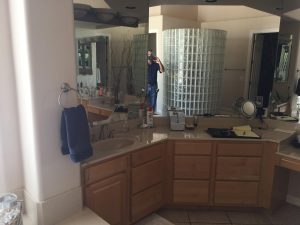Not only are there tried and true methods to prepare your house to sell, there’s also a best time to do it. Even with warmth and sunshine throughout the year, there is still a best time to sell your house in Phoenix.
Not to create suspense any longer, numbers from 2014-2017 show that June is the prime time for your house sale to close, which means listing in April. You can expect the highest price and the shortest amount of time on the market. The month of May was not far behind (listing in March), and generally, April through early autumn is the better part of the year to sell.
Statistics, though, depend on the sample, and if you focus only on 2017, you discover that November is the best month for closing, for both price and speed of sale. A bit of a surprise, but one that could be affected by anything from weather outside Arizona to instate employment shifts. It goes to show that data isn’t always the whole picture you need.
The house sale also depends on its individual features and the trends in your local real estate market, and trends can vary from place to place, despite what the data indicates. A good agent with experience in your area market can work with your needs and priorities to help you choose the best time to sell.
Agents also have good advice about preparing a home for sale, which pays off. A minimally furnished house free of clutter, deep-cleaned and staged well, might spend up to 60% less time on the market, and can even get higher offers from impressed buyers. Let your agent guide you on necessary repairs or upgrades/remodeling you should do. Get your agent’s advice and seal of approval on:
- The outdoor curb appeal, where your house makes its first impression. Landscaping should be well-groomed and attractively planted. The walkway needs to be fresh and inviting, up to and including the front door!
- The stylishly neutral, upgraded look of your rooms, from entryway to bedrooms and beyond. Any remodeling needs to be finished before the house is listed, so, for example, if you’re aiming at a June sale that will list in April, use the earlier part of the year to get the required remodeling done that will bring you return on investment.
With the right timing, the right preparation on the house, and the right agent, you should be on your way to a successful house sale.
About the author: This post was provided by our friends at HomeLight. HomeLight uses actual sales data and client reviews to find the best real estate agent for you. We’re a small team of talented people in San Francisco and Phoenix, excited to change the face of real estate.



